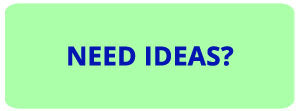Visual Content Matters in the Trade Show Industry
Why is it so often that we find trade show related articles that have no visual content, such as images or videos? One of the biggest focuses of the industry is visual appeal on the trade show floor, so why is it so frequent that this does not convey with articles on the web? As a collective whole, many of the trade show articles out there do not provide a single photo illustrating particular booths they are referring to, or design concepts they are writing about.
At trade shows, we exercise the invaluable and often overlooked grass-roots marketing approach of shaking hands, giving introductions, and making interpersonal connections. Naturally, these are the areas where the professionals of the industry have bolstered their skills. However, successfully marketing for trade show companies and events online might require these professionals to step outside of their comfort-zone a bit and practice some skills that go hand-in-hand with their industry when writing about it online. The important thing to realize here is that we don't all have to be photographers in order to do this.

If we plan on writing about a trade show experience when we get back, we should be asking ourselves this question while at the show: What am I observing that my readers will find valuable, and how can I most effectively get them to see this? Ask this question and you will quickly discover you are going to at least need some photos to take back with you. Even without a professional camera, we all have cell phones with a built-in camera for photos and video. Of course, if you are still using an old flip-phone the quality might not be up to par, but for most trade show attendees this is not the case. Most modern cell phones are definitely a safe alternative to no photos at all for situations without a professional camera.
Even for articles offering advice, visual content can be used to support the text and give the reader a break on the eyes. For example, when reading about the importance of having a professional appearance, it can be a huge help to have a photo providing examples.

Just like most other things, getting started is the hardest part. I do recognize this can be a bigger challenge than it seems depending on your situation. In closing, I'd like to leave a few tips for those that aren't in an ideal situation.
In rare circumstances, some of us are still using old plain html based websites. If this is the case, I highly recommend making the switch to a new website on a content management system, such as WordPress. However, this is the basic html code to implement an image on a webpage.
<img src="PHOTO URL" width="PIXELS">
Refer to this and replace PHOTO URL with the website address of the photo, and PIXELS with the amount of pixels wide you want the image to be. Normally, the height will adjust accordingly, but if not add height="PIXELS" at the end before the final bracket. You can even upload the photo to a free Flickr account if there is not an easy way to upload it to your web server. In most web browsers you can right click any image and click "copy image address" to get the url.
More commonly, we simply don't know where to find images we don't already have. One of my favorite places to get free creative commons photos that do not require attribution is Pixabay. This is now my go-to website because I know they will not require attribution, while many similar sites still require attribution (which doesn't always work out for your purpose). For more resources, here is an Inc.com article that lists 29 free stock photo websites.
Ultimately, the choice is yours, but most likely the increase in interest visual media can create will make it well worth the time. There are certainly writers and blogs out there already doing this, but hopefully in the future it will become more regular. Technology is catching up to us in a hurry, and it is time to embrace it.








































Comments